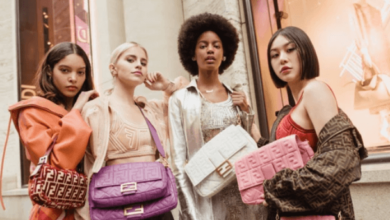
The Rise of Quiet Luxury: How Minimalism Became the Ultimate Status Symbol in 2024
Introduction
The concept of luxury has evolved dramatically over the years. In 2024, the ostentatious displays of wealth that once defined luxury have given way to a subtler, more refined aesthetic known as quiet luxury. This shift isn’t just about fashion; it’s a broader cultural movement that embraces minimalism as the new symbol of status. In a world saturated with logos and fast fashion, the rise of quiet luxury represents a deeper appreciation for craftsmanship, quality, and timeless elegance. This article explores the factors behind this shift and how minimalism has become the ultimate status symbol in 2024.
What Is Quiet Luxury?
Quiet luxury is the embodiment of sophistication without the need for overt branding or flashy displays. It’s characterized by an emphasis on superior quality, craftsmanship, and understated elegance. Rather than relying on recognizable logos, quiet luxury is about subtlety—the kind of luxury that whispers rather than shouts. It’s the difference between a hand-stitched leather bag from an artisan workshop and a mass-produced designer handbag emblazoned with logos. Quiet luxury is a statement of personal taste, discernment, and an appreciation for the finer things in life, without the need for external validation.
The Evolution of Luxury: From Flashy to Subtle
Luxury has always been about exclusivity and desirability, but the way it is expressed has changed over time. In the 1980s and 1990s, luxury was synonymous with bold logos, flashy colors, and overt displays of wealth. This era of “bling” was marked by a desire to showcase one’s status through easily recognizable symbols of affluence. However, as the global economy and cultural values have shifted, so too has the concept of luxury. The early 2000s saw the beginning of a move towards more subtle expressions of wealth, culminating in the rise of quiet luxury in the 2020s. This evolution reflects a growing preference for individuality, sustainability, and a deeper connection to the products we consume.
Minimalism as a Lifestyle Choice
Minimalism is more than just an aesthetic; it’s a lifestyle choice that emphasizes simplicity, intentionality, and a focus on what truly matters. In the context of luxury, minimalism translates to a preference for fewer, but better, things. This approach is rooted in the idea that true luxury is about quality rather than quantity. It’s about owning pieces that bring joy and value to one’s life, rather than accumulating possessions for the sake of status. The minimalist lifestyle is closely aligned with the principles of quiet luxury, where the emphasis is on craftsmanship, sustainability, and timeless design.
How Quiet Luxury Reflects Personal Values
The rise of quiet luxury is closely tied to a broader shift in personal values. Consumers are increasingly seeking products that align with their ethical beliefs and desire for sustainability. Quiet luxury brands often prioritize ethical sourcing, environmentally friendly practices, and support for artisans. This connection to personal values makes quiet luxury more than just a fashion trend; it’s a reflection of a deeper cultural movement towards mindfulness, authenticity, and a rejection of mass consumerism. For many, choosing quiet luxury is a way to express their commitment to these values in a tangible, everyday way.
Read more: Baddiehib
Key Characteristics of Quiet Luxury Brands
Quiet luxury brands are defined by several key characteristics: quality, craftsmanship, and heritage. These brands often have a long history of excellence, with a focus on creating products that are built to last. The materials used are of the highest quality, often sourced from sustainable or artisanal suppliers. Craftsmanship is paramount, with many products being made by hand or using traditional techniques passed down through generations. The emphasis is on creating timeless pieces that will stand the test of time, rather than following fleeting fashion trends. This dedication to quality and heritage sets quiet luxury brands apart from more mainstream luxury offerings.
The Influence of Fashion Icons and Celebrities
Fashion icons and celebrities have played a significant role in popularizing quiet luxury. Many high-profile figures, from actors to influencers, have embraced this aesthetic, choosing to wear brands that prioritize quality and subtlety over ostentation. This shift is particularly notable in a world where social media often rewards the most attention-grabbing images. By choosing quiet luxury, these individuals are making a statement about their values and their understanding of true luxury. Their influence has helped to make quiet luxury aspirational, particularly among those who seek to emulate the understated elegance of their favorite style icons.
How Quiet Luxury Differs from Traditional Luxury
While traditional luxury is often associated with recognizable logos, bold designs, and high-profile marketing campaigns, quiet luxury takes a different approach. The emphasis is on the product itself—its quality, craftsmanship, and the story behind it—rather than the brand’s image. Quiet luxury pieces are often more understated, with a focus on materials and design rather than branding. This creates a more personal connection between the consumer and the product, as the value lies in the item’s inherent qualities rather than its ability to signal wealth to others. This subtlety and focus on quality over branding is what sets quiet luxury apart from traditional luxury.
Why Quiet Luxury Appeals to the Wealthy
For the wealthy, quiet luxury offers a way to enjoy the finer things in life without attracting unnecessary attention. In a world where wealth can sometimes be met with suspicion or even hostility, the ability to enjoy luxury privately is highly appealing. Quiet luxury allows individuals to indulge in high-quality products and experiences without the need for public display. It’s a way to enjoy the best that life has to offer, while still maintaining a sense of privacy and discretion. This appeal to the wealthy is one of the key reasons why quiet luxury has become such a significant trend in recent years.
Quiet Luxury in Fashion: Key Designers and Brands
Several designers and brands are at the forefront of the quiet luxury movement, each bringing their unique approach to this trend. Brands like Loro Piana, The Row, and Brunello Cucinelli are known for their commitment to quality, craftsmanship, and understated elegance. These brands focus on creating timeless pieces that are meant to be worn and cherished for years, rather than seasonal items that follow fleeting fashion trends. Their designs are often simple and classic, with an emphasis on luxurious materials and impeccable craftsmanship. These are the brands that define quiet luxury in the fashion world, setting the standard for others to follow.
The Role of Sustainability in Quiet Luxury
Sustainability is a key component of quiet luxury, with many brands prioritizing environmentally friendly practices and ethical sourcing. This focus on sustainability is a reflection of the growing demand from consumers for products that align with their values. Quiet luxury brands often use sustainable materials, support artisanal craftsmanship, and ensure that their production processes have a minimal impact on the environment. This commitment to sustainability not only adds to the appeal of quiet luxury but also reinforces the idea that true luxury is about quality, longevity, and responsibility. It’s a way of consuming that is both mindful and luxurious, offering a more meaningful alternative to fast fashion and mass production.
Case Studies: Brands Exemplifying Quiet Luxury
Several brands exemplify the principles of quiet luxury, each with its unique approach. Loro Piana, for example, is renowned for its use of the finest materials, such as vicuña wool and cashmere, and its commitment to craftsmanship. The Row, founded by Mary-Kate and Ashley Olsen, is known for its minimalist designs and focus on high-quality fabrics. Brunello Cucinelli combines luxury with ethics, emphasizing sustainability and the well-being of its workers. These brands are not just selling products; they are selling a lifestyle—one that values quality, authenticity, and understated elegance. Their success is a testament to the growing appeal of quiet luxury in today’s market.
How Social Media is Shaping Quiet Luxury
Social media has played a paradoxical role in the rise of quiet luxury. On one hand, the visual nature of platforms like Instagram has traditionally favored bold, eye-catching designs. On the other hand, the desire for authenticity and individuality has led many influencers and celebrities to embrace and promote quiet luxury. This has helped to create a new kind of social media aesthetic, one that values quality over quantity, and subtlety over spectacle. While quiet luxury might seem at odds with the attention-seeking nature of social media, it has found a niche among those who appreciate the finer, more understated things in life.
Quiet Luxury Beyond Fashion: Interiors and Lifestyle
Quiet luxury is not limited to fashion; it extends to all areas of life, including interiors, automobiles, and even food and travel. In interior design, quiet luxury is characterized by the use of high-quality materials, timeless designs, and a focus on comfort and functionality. It’s about creating spaces that are both beautiful and livable, with an emphasis on craftsmanship and attention to detail. In the automotive world, quiet luxury is reflected in the choice of understated yet powerful vehicles, such as the Rolls-Royce Ghost or the Bentley Continental GT. Even in food and travel, quiet luxury is about seeking out the best experiences, whether it’s a Michelin-starred restaurant or a private, secluded getaway.
Challenges and Criticisms of Quiet Luxury
While quiet luxury has many admirers, it is not without its challenges and criticisms. Some argue that the focus on quality and craftsmanship can lead to exclusivity and inaccessibility, making quiet luxury the domain of the wealthy elite. Others point out that the emphasis on minimalism and subtlety can sometimes come across as elitist or out of touch with the realities of everyday life. Additionally, there is the risk that as quiet luxury becomes more mainstream, it could lose some of its allure and become just another trend. These challenges highlight the complexities of the quiet luxury movement and the need for it to remain true to its principles.
How to Identify Quiet Luxury Pieces
Identifying quiet luxury pieces requires a discerning eye and an understanding of what sets these items apart. Look for pieces that are made from high-quality materials, such as cashmere, silk, or fine leather. Pay attention to the craftsmanship—hand-stitched seams, intricate detailing, and a flawless finish are all signs of a quality product. Also, consider the brand’s heritage and reputation; many quiet luxury brands have a long history of excellence and are known for their commitment to quality. Finally, trust your instincts—quiet luxury is about personal taste and discernment, so choose pieces that resonate with you on a deeper level.
The Future of Quiet Luxury: Trends to Watch
As we look to the future, several trends are likely to shape the continued evolution of quiet luxury. The growing demand for sustainability will continue to influence the materials and practices used by luxury brands. There may also be a shift towards more personalized and bespoke offerings, as consumers seek out unique, one-of-a-kind pieces that reflect their individuality. Additionally, the rise of digital and virtual luxury experiences could open up new possibilities for quiet luxury, allowing consumers to engage with brands in innovative ways. Whatever the future holds, it’s clear that quiet luxury is more than just a passing trend—it’s a reflection of deeper cultural shifts that are likely to endure.
The Impact of Economic Factors on Quiet Luxury
Economic factors play a significant role in the rise of quiet luxury. In times of economic uncertainty, consumers often turn to products that offer long-term value rather than fleeting trends. This is particularly true among the wealthy, who may seek out quiet luxury as a way to enjoy their wealth discreetly and securely. Additionally, the emphasis on quality and durability in quiet luxury aligns with a more cautious and considered approach to spending. As global economic conditions continue to evolve, the demand for quiet luxury is likely to remain strong, driven by a desire for security, quality, and timeless elegance.
Quiet Luxury and Cultural Significance
The cultural significance of quiet luxury varies across different regions and societies. In some cultures, such as Japan, the concept of “shibui” or understated beauty has long been valued, making quiet luxury a natural fit. In other regions, where overt displays of wealth are more common, the rise of quiet luxury represents a shift towards a more refined and introspective approach to consumption. The global nature of today’s luxury market means that quiet luxury is being embraced by a diverse range of consumers, each bringing their unique cultural perspective to the trend. This cultural diversity adds richness and depth to the quiet luxury movement, making it a truly global phenomenon.
Frequently Asked Questions (FAQs)
What is the difference between quiet luxury and traditional luxury?
Quiet luxury focuses on subtlety, quality, and craftsmanship, while traditional luxury often emphasizes recognizable logos, bold designs, and brand visibility.
Why is quiet luxury becoming popular?
Quiet luxury appeals to those who value discretion, quality, and sustainability, reflecting a broader cultural shift towards mindfulness and authenticity.
Can anyone afford quiet luxury?
While quiet luxury is typically associated with higher price points, the focus on longevity and quality means that it can be more cost-effective in the long run.
How does quiet luxury relate to sustainability?
Many quiet luxury brands prioritize sustainable practices, using eco-friendly materials and ethical production methods, aligning with the growing demand for responsible consumption.
What are some examples of quiet luxury brands?
Brands like Loro Piana, The Row, and Brunello Cucinelli are known for their commitment to quality, craftsmanship, and understated elegance, making them leaders in the quiet luxury movement.
Is quiet luxury a trend or a lasting movement?
Quiet luxury is more than just a trend; it’s a reflection of deeper cultural and economic shifts that are likely to influence luxury consumption for years to come.
Conclusion
The rise of quiet luxury in 2024 marks a significant shift in the way we think about status, wealth, and consumption. In a world that is increasingly rejecting excess and embracing sustainability, quiet luxury offers a way to enjoy the finer things in life without the need for ostentation. It’s a movement that values quality, craftsmanship, and timeless design, reflecting a deeper appreciation for the things that truly matter. As we move forward, quiet luxury is likely to continue evolving, shaping not only the world of fashion but also our broader cultural landscape.




